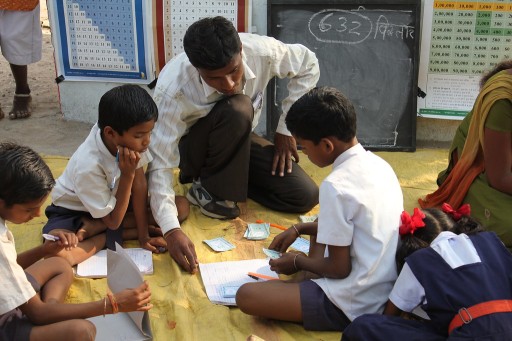R* is a sixth grader in a school in Ramanathapuram, Tamil Nadu. The class is being taught a lesson in local history. The book has a picture of a ruler who belonged to the feudal caste that discriminated against R*’s community. R* uses his compass to poke holes in the face of the ruler in the textbook.
K* is an under-resourced school in Tamil Nadu. The largest community of students studying there belongs to a relatively upper caste. After government counselling, a teacher from a lower caste is appointed there. During class, a student throws a firecracker near her ear, rupturing her eardrum. She is forced to leave.
In India, caste is a social and psychological construct that affects children from infancy. As they progress through their schooling, caste not only infiltrates their mindset, leading to feelings of resistance and pride, but it also manifests in explicit symbols used to differentiate among different caste groups. In the districts of Tirunelveli, Thoothukudi, Tenkasi, and Ramanathapuram, school students wear colour-coded wristbands to reinforce their caste identities.
The government’s response to this discriminatory practice in schools has lacked consistency. In August 2019, the state education department circular that sought to discourage this practice in schools recognised that the symbols created an invisible wall among students of different caste groups. However, the circular was later revoked by the then ruling party after it was labelled ‘anti-Hindu.’
As the practice continues, even claiming the life of a student at Pallakkal Podhukodi Government Higher Secondary School in 2022, district administrations have had to intervene. In Ramanathapuram, a hotbed of caste-based atrocities, the district administration has piloted a project that hopes to address this issue with lasting effect. The Government Higher Secondary School, Sambhai, is one of the schools in the district where the house-system has been launched. The colours on the compound wall and chart papers in the classrooms here are a depiction of the fervour with which students have participated in the new intervention. The new initiative draws on the traditional house-system to provide an identity for group formation within the classroom that is different from their conventional socio-economic identities. The house-system aims to make students cooperate towards a common goal. Evidence of collaboration among students from different caste groups is also validated by the study, “Types of Contact: A Field Experiment on Collaborative and Adversarial Caste Integration”, which found that collaborative contact increases cross-caste friendships and reduces caste favouritism. The implementation team at the collectorate confirms that the hypothesis guiding this initiative is the social fact theory of Emile Durkheim. By creating a new collective identity, the house-system intends to create a social fact that alters the nature of relationships within the classroom. Another important facet of the house-system is how it ‘gamifies’ mundane school activities. The most significant impact, according to the children, has been on the seemingly insignificant task of cleaning classrooms. The effect of game-based learning is also emphasised by L.S. Vygotsky, a renowned child psychologist.
Teachers have applauded the programme for improving discipline among students. The distribution of leadership has also increased leadership skills and aspirations among students. Communication channels within schools have also been enhanced through the implementation of the initiative.
Addressing caste bias in classrooms is a complex issue. But one can hope that new practices within classrooms that make children question their ingrained beliefs during the crucial years of their identity formation will percolate into their community.











